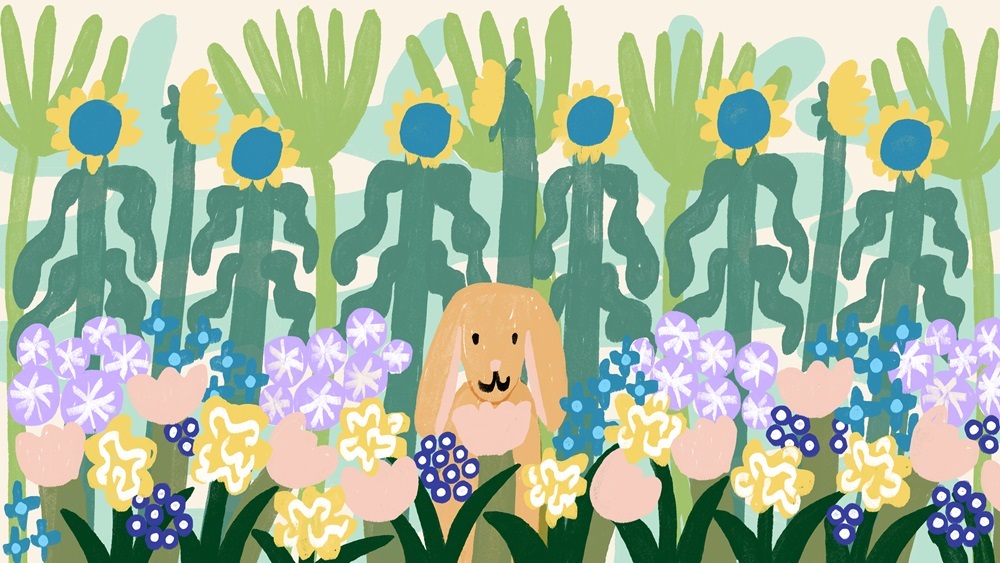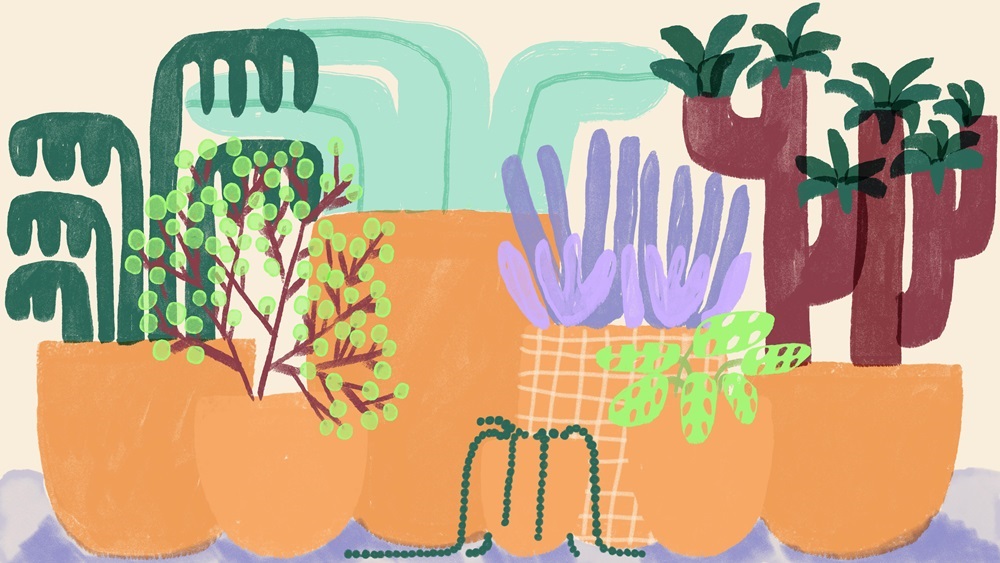[Interview] Encouraging Human Connection and Emotional Experiences: Carissa Potter x Samsung Art Store
“I hope that my work will allow people to say what is inside their hearts or on their minds when they don’t have the right words.”
Carissa Potter describes herself as “a human longing for connection.” Through printmaking, writing and installations, she has pursued this meaningful goal of fostering interpersonal experiences. Her work spans various mediums, capturing the intricacies of such human experiences with emotional depth and resonance.
Potter has held residencies at Facebook, Google and the Kala Art Institute in Berkeley, California. Additionally, her pieces have been featured at the San Francisco Museum of Modern Art (SFMOMA) and Urban Outfitters. Through her company, People I’ve Loved, she has expanded her reach to over 600 stores worldwide.
Her desire for meaningful connections is apparent in her work — which combines words with drawings to create pieces that deeply resonate with audiences. Samsung Newsroom spoke with Potter about her artistic journey and how she uses art to connect with people.

▲ Carissa Potter
Artistic Identity and Philosophy
Q: Please briefly introduce yourself.
I am a person longing for connection. I write books, have conversations, create art installations and process emotions through text and images. My company, People I’ve Loved, has made objects to foster connections between humans and non-humans in Oakland, California, since 2012.
Q: What inspires you the most in your creative work?
There is so much joy in problem solving and thinking things through by creating something. From a very early age, I have asked myself deep questions that require these types of creative thoughts. What about humans make us want to stick through hard moments? How can meanings exist in a meaningless universe?
Mirrors of Emotion as Themes and Narratives
Q: Your openness in sharing personal thoughts and emotions adds a special layer of connection to your artwork. How has this transparency shaped your creations?
For artwork to be visually interesting, there must be some kind of emotional relationship. I gravitate toward art that is somehow reflective of my own experience — almost like holding up a mirror to a life that I either want or have had. Whenever I make something that is hard, painful or beautiful, I have faith that the piece is comforting someone out there.
“Anytime people are open, honest and vulnerable, there is a subconscious invitation for someone to return the sentiment.”
In a visual sense, the idea of connection is most directly communicated using words and figuration. So, that is what I tend to lean on — telling stories that we long to hear, but somehow have had a hard time finding due to societal limitations on what we are allowed to feel. The idea that feelings are responses to external stimuli is emotionally liberating. We don’t have to judge ourselves as good or bad — we just exist and that makes us worthy in and of itself.

▲ Carissa Potter with her daughter Margaret
Q: How do viewers typically respond to these deeply personal dimensions?
Anytime people are open, honest and vulnerable, there is a subconscious invitation for someone to return the sentiment. I try hard to give people the benefit of the doubt and understand that I can feel this way and they can feel that way. Both perspectives hold value.
Then, when someone says, “I feel that way too,” “I found your work when I was going through something so similar,” or “Your work helped me accept my broken self,” I just feel like a part of something greater than myself.
“For artwork to be visually interesting, there must be some kind of emotional relationship.”
Q: In your discussions on emotional granularity, you mention using art as a release for feelings you might not express otherwise. How does art provide a platform for these emotions?
We often wish to say the right thing or do something better. However, our intentions and actions are so influenced by the situation that it is hard to be honest. Through art, you can convey feelings or sentiments about someone that you could never actually say. There is an emotional relief to honestly sharing something with someone you trust and having reciprocated intimacy.
Carissa Potter x Samsung Art Store
Q: “Winter Moon” was a favorite among Samsung Art Store users last winter. What inspires you to choose specific motifs for your seasonal pieces?
If I had to guess why “Winter Moon” was popular, I’d say it’s because it is simple. We live in a complex world, and simple images are like a break for the mind. The imagery is comforting and melancholic at the same time, so there is a neutral emotional tone that I am attracted to. Winter is often portrayed as cold, dark and isolating, but the season can create moments of safety and connection.

▲ “Winter Moon” (2022)
Q: “Bunny Love” and “Flowers for Mom” were featured in Samsung Art Store’s April and May curated collections. Why do you think these pieces resonated so strongly?
At the end of winter, we search for new life — for energy, vitality and things to celebrate and look forward to. Both “Bunny Love” and “Flowers for Mom” are visual representations of what we long for and a reminder of what is in store. Seasonal rituals are important for understanding space and time. In many ways, that is what the images are doing for us — grounding us and telling us we are right where we need to be.

▲ “Bunny Love” (2024)
“There is an emotional relief to honestly sharing something with someone you trust and having reciprocated intimacy.”
Q: What are some other pieces you recommend users to display on their Frame TVs?
During my episodes of depression, I found that tending to plants brings me joy. It is so simple and obvious —but, really for me, it was massively uplifting.
“Plant Wall” features various black plants against a white background. This piece was part of my collaboration with SFMOMA. “A Family of Plants” is a group of plants in terracotta pots. “September Bloom” shows a woman seated with a bouquet of flowers.
To me, plants represent the interconnected nature of being — they make you awe at the complexity of life. There is beauty and life everywhere. Working with plants makes me feel little, yet helpful. And sometimes feeling little is comforting.

▲ “Plant Wall” (2020)

▲ “A Family of Plants” (2024)

▲ “September Bloom” (2023)
Exploring Art in the Digital Realm
Q: How do you envision technology impacting the creation and distribution of art?
I believe all art throughout time has been a collaboration with the available technology. But that is not a bad thing! It could be, but it is also just a reformatting of information and understanding.
I can’t say for sure what everything will look like in the future, but it’s interesting to think about how we are directly harnessing human knowledge when we use emerging tech or AI. In some ways, it is giving form to the collective consciousness.
Q: Have you seen any changes in how people engage or interpret art as digital mediums become more popular?
I love flipping through art and seeing the diverse pieces humans have made. In art school, making something comfortable enough for someone’s home was sort of a faux pas. But now, I think it is valuable if someone likes something enough to want to live with it.
Art is now a lot more democratic. It is magical to be able to enjoy artwork in your home that used to only be accessible in formal institutions. Your flesh and bone can be in one spot while your mind is in a completely different space surrounded by things and people you love.
Q: Is there anything else you would like to share?
I don’t think we discussed nostalgia. Recently, I pondered about why we keep objects. My brain tends to remember the hard things. From an evolutionary standpoint, this makes sense. If something is dangerous, I should remember it.
Yet, there are things that I want to remember that don’t always fall into the neuropathways that serve me to not die — like the good things. Reminders of the sweetness of life, times of connection and joy are more important than ever in recognizing that there will be moments of pleasure again. I think art can do that and so much more.
There is a study that suggested humans are taking less and less emotional risks in life. I find that somewhat depressing. I am interested in building relationships, feeling emotions and getting dirty. I hope that my work will allow people to say what is inside their hearts or on their minds when they don’t have the right words.
: